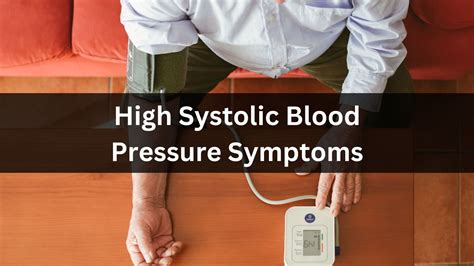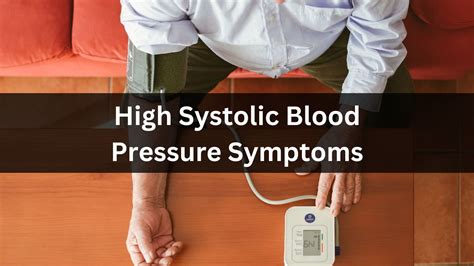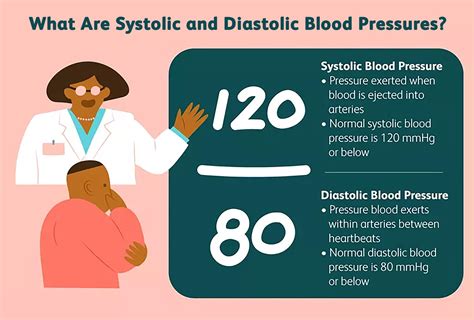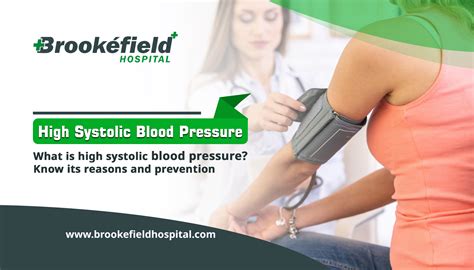Intro
Understand Elevated Systolic Blood Pressure, its causes, symptoms, and risks, including hypertension, cardiovascular disease, and stroke, to manage and lower high blood pressure effectively.
Elevated systolic blood pressure is a condition that affects millions of people worldwide, and it is a significant risk factor for cardiovascular disease, stroke, and kidney disease. Systolic blood pressure is the top number in a blood pressure reading, and it represents the pressure in the arteries when the heart beats. When this number is elevated, it means that the pressure in the arteries is higher than normal, which can put extra strain on the heart, blood vessels, and other organs. In this article, we will delve into the world of elevated systolic blood pressure, exploring its causes, symptoms, diagnosis, treatment options, and prevention strategies.
The importance of understanding elevated systolic blood pressure cannot be overstated. High blood pressure is a major public health concern, and it is estimated that over 1 billion people worldwide have hypertension. In the United States alone, it is estimated that over 100 million adults have high blood pressure, and this number is expected to increase as the population ages. Elevated systolic blood pressure is a significant risk factor for cardiovascular disease, which is the leading cause of death worldwide. By understanding the causes, symptoms, and treatment options for elevated systolic blood pressure, individuals can take steps to reduce their risk of developing cardiovascular disease and other related health problems.
Elevated systolic blood pressure can be caused by a variety of factors, including genetics, lifestyle, and underlying medical conditions. Some of the most common causes of elevated systolic blood pressure include a diet high in sodium, lack of physical activity, stress, and certain medical conditions such as kidney disease and sleep apnea. Additionally, certain medications, such as birth control pills and cold medicines, can also increase blood pressure. It is essential to understand the causes of elevated systolic blood pressure to develop effective treatment and prevention strategies.
Elevated Systolic Blood Pressure Causes

Genetic Factors
Genetic factors can play a significant role in the development of elevated systolic blood pressure. Research has shown that individuals with a family history of high blood pressure are more likely to develop the condition themselves. This is because genetic factors can affect the way the body regulates blood pressure, and individuals with a family history of high blood pressure may be more sensitive to certain environmental and lifestyle factors that can increase blood pressure.Lifestyle Factors
Lifestyle factors, such as diet and physical activity, can also play a significant role in the development of elevated systolic blood pressure. A diet high in sodium can increase blood pressure, as can a lack of physical activity. Stress can also contribute to elevated systolic blood pressure, as it can cause the body to release hormones that increase blood pressure.Elevated Systolic Blood Pressure Symptoms

It is essential to note that these symptoms can also be caused by other conditions, and the only way to determine if elevated systolic blood pressure is present is through a blood pressure reading.
Diagnosis
Elevated systolic blood pressure is typically diagnosed through a blood pressure reading. A healthcare provider will use a blood pressure cuff to measure the pressure in the arteries, and the reading will be recorded as a systolic pressure (the top number) and a diastolic pressure (the bottom number). A systolic pressure of 120-129 mmHg is considered elevated, while a systolic pressure of 130 mmHg or higher is considered high.Elevated Systolic Blood Pressure Treatment

Medications may also be prescribed to help lower blood pressure. These may include:
- Diuretics, which help the body get rid of excess fluid
- Beta blockers, which slow the heart rate and reduce blood pressure
- ACE inhibitors, which relax blood vessels and reduce blood pressure
- Calcium channel blockers, which relax blood vessels and reduce blood pressure
Lifestyle Changes
Lifestyle changes are an essential part of treating elevated systolic blood pressure. By making healthy lifestyle choices, individuals can help lower their blood pressure and reduce their risk of developing cardiovascular disease. Some healthy lifestyle choices include: * Eating a healthy diet that is low in sodium and rich in fruits, vegetables, and whole grains * Engaging in regular physical activity, such as walking or jogging * Reducing stress through techniques such as meditation or deep breathing * Getting enough sleep each night * Quitting smokingMedications
Medications may also be prescribed to help lower blood pressure. These medications work by relaxing blood vessels, reducing the amount of fluid in the body, or slowing the heart rate. Some common medications used to treat elevated systolic blood pressure include: * Diuretics * Beta blockers * ACE inhibitors * Calcium channel blockersElevated Systolic Blood Pressure Prevention

Healthy Diet
Eating a healthy diet is an essential part of preventing elevated systolic blood pressure. A healthy diet should be low in sodium and rich in fruits, vegetables, and whole grains. Some healthy food choices include: * Fruits, such as bananas and apples * Vegetables, such as carrots and broccoli * Whole grains, such as brown rice and quinoa * Lean proteins, such as chicken and fish * Low-fat dairy products, such as milk and cheeseRegular Physical Activity
Engaging in regular physical activity is also an essential part of preventing elevated systolic blood pressure. Physical activity can help lower blood pressure and reduce the risk of developing cardiovascular disease. Some healthy physical activities include: * Walking * Jogging * Swimming * Cycling * DancingWhat is elevated systolic blood pressure?
+Elevated systolic blood pressure is a condition where the top number in a blood pressure reading is higher than normal, indicating increased pressure in the arteries.
What are the symptoms of elevated systolic blood pressure?
+Elevated systolic blood pressure often does not cause any symptoms, but some individuals may experience headaches, dizziness, nosebleeds, fatigue, and chest pain.
How is elevated systolic blood pressure diagnosed?
+Elevated systolic blood pressure is typically diagnosed through a blood pressure reading, where a healthcare provider uses a blood pressure cuff to measure the pressure in the arteries.
What are the treatment options for elevated systolic blood pressure?
+Treatment for elevated systolic blood pressure typically involves a combination of lifestyle changes, such as eating a healthy diet and engaging in regular physical activity, and medication, such as diuretics, beta blockers, ACE inhibitors, and calcium channel blockers.
How can elevated systolic blood pressure be prevented?
+Elevated systolic blood pressure can be prevented by making healthy lifestyle choices, such as eating a healthy diet, engaging in regular physical activity, reducing stress, getting enough sleep, and quitting smoking.
In conclusion, elevated systolic blood pressure is a significant public health concern that can increase the risk of cardiovascular disease, stroke, and kidney disease. By understanding the causes, symptoms, diagnosis, treatment options, and prevention strategies for elevated systolic blood pressure, individuals can take steps to reduce their risk of developing this condition. If you have any questions or concerns about elevated systolic blood pressure, we encourage you to comment below or share this article with a friend or family member who may be at risk. Additionally, we invite you to take a proactive approach to your health by making healthy lifestyle choices and scheduling regular check-ups with your healthcare provider. Together, we can work towards reducing the risk of elevated systolic blood pressure and promoting overall health and well-being.
